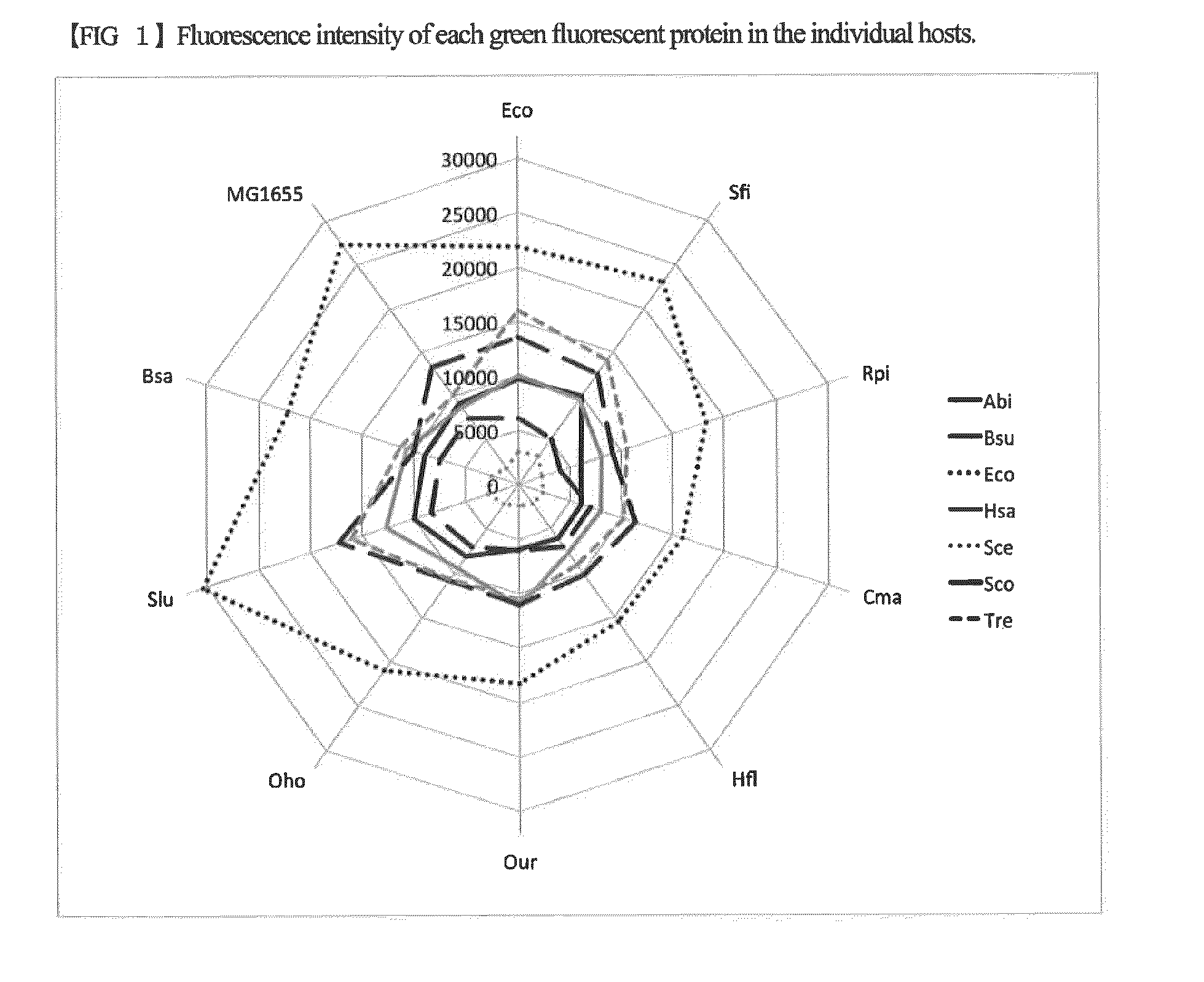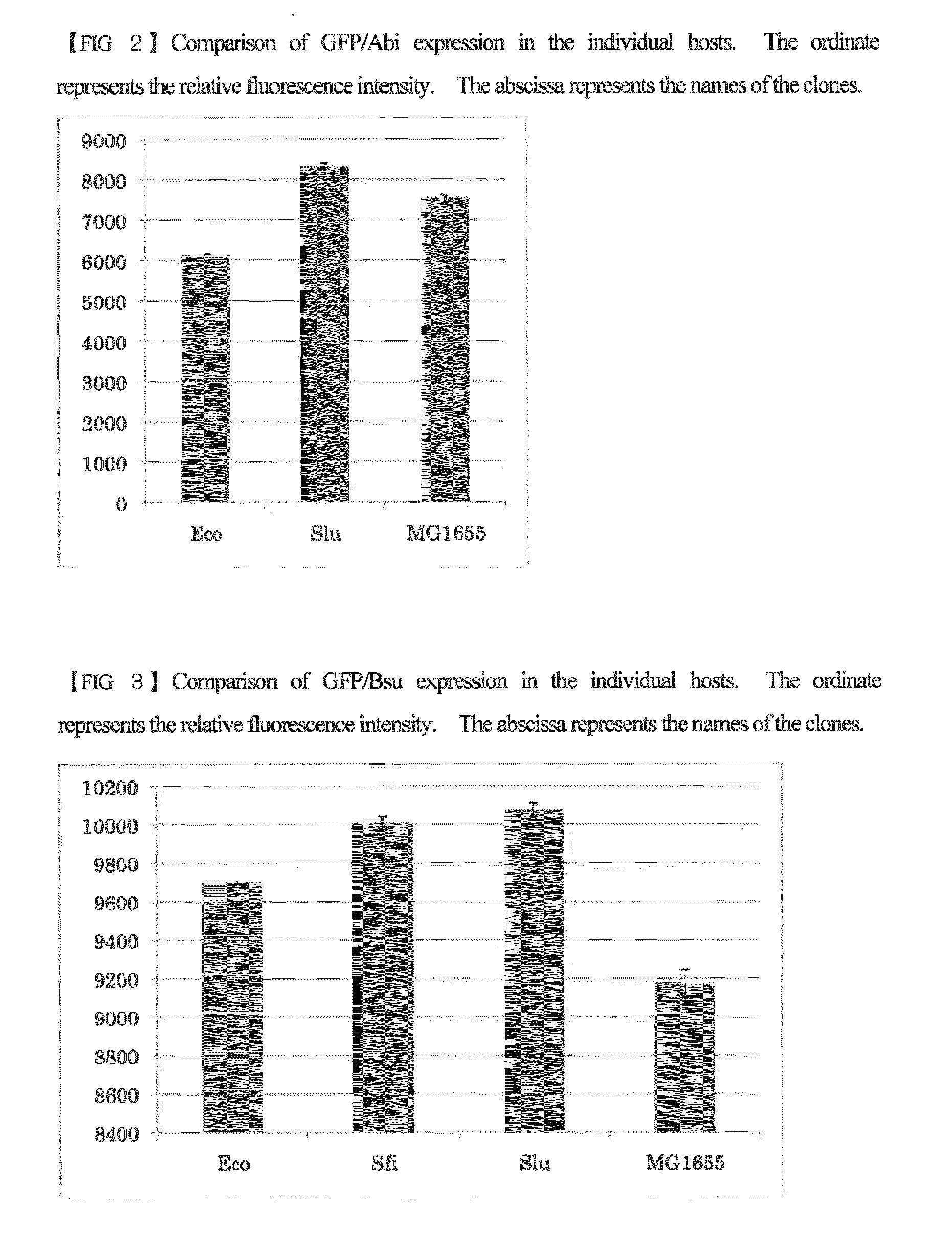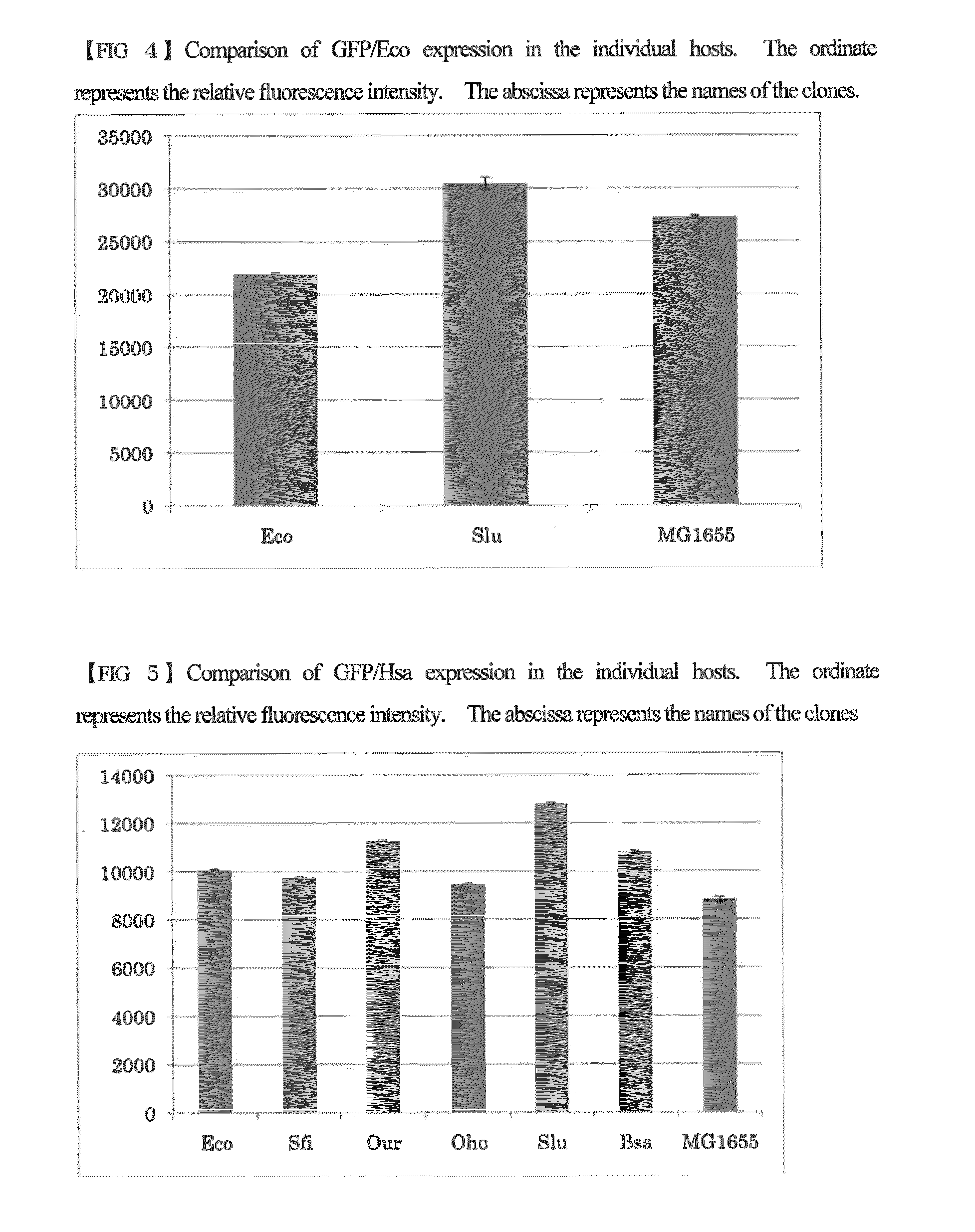Escherichia coli having a modified translational property
- Summary
- Abstract
- Description
- Claims
- Application Information
AI Technical Summary
Benefits of technology
Problems solved by technology
Method used
Image
Examples
example 1
Creation of Escherichia coli Strains Comprising 16S rRNAs Derived from Heterologous Microorganisms
[0046](1) Preparation of 16S rRNA Genes from Isolated Microorganisms
[0047]As sources of 16S rRNA genes, the following bacterial strains obtained from National Institute of Technology and Evaluation were used. The descriptions in the parentheses are reference numbers of the bacterial strains. Individual 16S rRNA genes from Serratia ficaria (NBRC 102596), Ralstonia pickettii (NBRC 102503), Caldimonas manganoxidans (NBRC 16448), Hydrogenophaga flava (NBRC 102514), Oligella urethralis (NBRC 14589), Oxalicibacterium horti (NBRC 13594), Spirillum lunatum (NBRC 13958), Burkholderia sacchari possessed by the inventors' laboratory and Escherichia coli MG1655 possessed by inventors' laboratory were amplified by PCR.
[0048]For the amplification of the 16S rRNA gene fragments, the oligonucleotides represented by SEQ ID NOs:1 and 2 (these are both manufactured by Hokkaido System Science Co., Ltd.) we...
example 2
Protein Expression by Hosts Comprising 16S rRNA Gene Derived from Isolated Strain
(1) Transformation of Mutant Host Strains
[0056]Using the host strains created in Example 1 which has been introduced with the 16S rRNA gene derived from the isolated bacterial strain, competent cells were produced according to the procedure shown in Sambrook et al., Molecular Cloning: A Laboratory Manual third edition. Cold Spring Harbor Laboratory Press. 1.105. 2001. These cells were transformed with plasmid expressing the seven green fluorescent proteins described below. The expression plasmids for the green fluorescent proteins were obtained by cloning each of the genes encoding the green fluorescent proteins into the plasmid pJexpress402 provided by DNA2.0 (containing a chloramphenicol resistant marker). The cloned green fluorescent proteins have the same amino acid sequence, but the nucleotide sequences thereof are different from each other. The green fluorescent proteins are proteins derived from ...
example 3
Protein Expression by Host Library Comprising 16S rRNA Genes Derived from Metagenome
(1) Transformation of Mutant Host Strain
[0060]Using the host library created in Example 1 which has been introduced with the 16S rRNA genes derived from the metagenome, competent cells were produced according to the procedure shown in Sambrook et al., Molecular Cloning: A Laboratory Manual third edition. Cold Spring Harbor Laboratory Press. 1.105. 2001. The competent cells were transformed with plasmid expressing red fluorescent proteins. As the red fluorescent proteins, DsRed2 manufactured by Clontech (SEQ ID NO:18) and DsRed2-mut, a mutant containing a double nucleotide substitution site (SEQ ID NO:19) were used.
(2-1) Evaluation of Fluorescence from Red Fluorescent Protein DsRed2
[0061]The 480 colonies of transformants of the red fluorescent protein genes obtained in (1) above were inoculated into 1 mL of LB medium containing 100 μg / mL ampicillin (a 96-well deep well plate manufactured by Greiner), ...
PUM
| Property | Measurement | Unit |
|---|---|---|
| Electrical conductance | aaaaa | aaaaa |
| Efficiency | aaaaa | aaaaa |
| Strain point | aaaaa | aaaaa |
Abstract
Description
Claims
Application Information
 Login to View More
Login to View More - R&D
- Intellectual Property
- Life Sciences
- Materials
- Tech Scout
- Unparalleled Data Quality
- Higher Quality Content
- 60% Fewer Hallucinations
Browse by: Latest US Patents, China's latest patents, Technical Efficacy Thesaurus, Application Domain, Technology Topic, Popular Technical Reports.
© 2025 PatSnap. All rights reserved.Legal|Privacy policy|Modern Slavery Act Transparency Statement|Sitemap|About US| Contact US: help@patsnap.com



